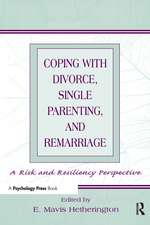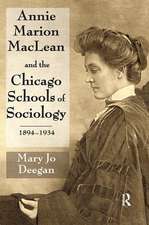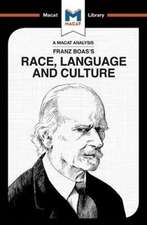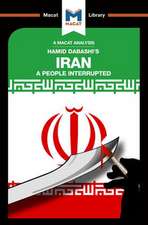Mobility, Space and Culture: International Library of Sociology
Autor Peter Merrimanen Limba Engleză Paperback – 11 noi 2013
The book takes an interdisciplinary approach, drawing upon theoretical and empirical work from across the social sciences and humanities to provide a critical evaluation of the relationship between 'mobility' and 'place'/'site', reformulating places as in process, open, and dynamic spatial formations. Merriman draws upon post-structuralist writings on space, practice and society to demonstrate how movement is not simply practised or experienced in relation to space and time, but gives rise to rhythms, forces, atmospheres, affects and materialities which are often more crucial to embodied apprehensions of events than sensibilities of spatiality and temporality. He draws upon detailed empirical research on experiences of, and social reactions to, driving in late Victorian and Edwardian Britain to trace how the motor-car became associated with sensations of movement-space and enmeshed with debates about embodiment, health, visuality, gender and politics.
The book will be essential reading for undergraduates and postgraduates studying mobility in sociology, geography, cultural studies, politics, transport studies, and history.
| Toate formatele și edițiile | Preț | Express |
|---|---|---|
| Paperback (1) | 484.47 lei 43-57 zile | |
| Taylor & Francis – 11 noi 2013 | 484.47 lei 43-57 zile | |
| Hardback (1) | 1075.15 lei 43-57 zile | |
| Taylor & Francis – 18 iun 2012 | 1075.15 lei 43-57 zile |
Din seria International Library of Sociology
-
 Preț: 364.22 lei
Preț: 364.22 lei -
 Preț: 394.63 lei
Preț: 394.63 lei -
 Preț: 358.41 lei
Preț: 358.41 lei - 15%
 Preț: 411.89 lei
Preț: 411.89 lei - 8%
 Preț: 382.16 lei
Preț: 382.16 lei - 37%
 Preț: 488.64 lei
Preț: 488.64 lei - 37%
 Preț: 1182.96 lei
Preț: 1182.96 lei - 37%
 Preț: 1181.31 lei
Preț: 1181.31 lei - 36%
 Preț: 1042.56 lei
Preț: 1042.56 lei - 33%
 Preț: 328.22 lei
Preț: 328.22 lei - 37%
 Preț: 1348.74 lei
Preț: 1348.74 lei - 34%
 Preț: 1045.20 lei
Preț: 1045.20 lei - 36%
 Preț: 1042.56 lei
Preț: 1042.56 lei - 37%
 Preț: 1404.44 lei
Preț: 1404.44 lei - 36%
 Preț: 1042.56 lei
Preț: 1042.56 lei - 36%
 Preț: 1042.98 lei
Preț: 1042.98 lei - 36%
 Preț: 1045.42 lei
Preț: 1045.42 lei - 37%
 Preț: 1182.54 lei
Preț: 1182.54 lei - 36%
 Preț: 1461.29 lei
Preț: 1461.29 lei -
 Preț: 446.53 lei
Preț: 446.53 lei - 36%
 Preț: 1042.68 lei
Preț: 1042.68 lei - 37%
 Preț: 1404.44 lei
Preț: 1404.44 lei - 38%
 Preț: 1962.29 lei
Preț: 1962.29 lei - 37%
 Preț: 1184.18 lei
Preț: 1184.18 lei - 36%
 Preț: 1042.56 lei
Preț: 1042.56 lei - 34%
 Preț: 352.95 lei
Preț: 352.95 lei - 36%
 Preț: 1407.29 lei
Preț: 1407.29 lei - 33%
 Preț: 332.87 lei
Preț: 332.87 lei - 37%
 Preț: 1350.78 lei
Preț: 1350.78 lei - 34%
 Preț: 1208.76 lei
Preț: 1208.76 lei - 34%
 Preț: 1348.74 lei
Preț: 1348.74 lei - 37%
 Preț: 1181.73 lei
Preț: 1181.73 lei - 37%
 Preț: 1182.96 lei
Preț: 1182.96 lei - 18%
 Preț: 1014.47 lei
Preț: 1014.47 lei - 37%
 Preț: 1185.47 lei
Preț: 1185.47 lei - 37%
 Preț: 1348.74 lei
Preț: 1348.74 lei - 32%
 Preț: 335.39 lei
Preț: 335.39 lei - 36%
 Preț: 1041.33 lei
Preț: 1041.33 lei - 32%
 Preț: 339.90 lei
Preț: 339.90 lei - 33%
 Preț: 341.46 lei
Preț: 341.46 lei - 34%
 Preț: 1043.58 lei
Preț: 1043.58 lei - 18%
 Preț: 1066.09 lei
Preț: 1066.09 lei - 37%
 Preț: 1180.11 lei
Preț: 1180.11 lei - 37%
 Preț: 1184.18 lei
Preț: 1184.18 lei - 39%
 Preț: 1683.16 lei
Preț: 1683.16 lei - 36%
 Preț: 1043.37 lei
Preț: 1043.37 lei - 33%
 Preț: 332.44 lei
Preț: 332.44 lei - 33%
 Preț: 358.44 lei
Preț: 358.44 lei
Preț: 484.47 lei
Nou
Puncte Express: 727
Preț estimativ în valută:
92.73€ • 100.76$ • 77.95£
92.73€ • 100.76$ • 77.95£
Carte tipărită la comandă
Livrare economică 21 aprilie-05 mai
Preluare comenzi: 021 569.72.76
Specificații
ISBN-13: 9780415736985
ISBN-10: 0415736986
Pagini: 244
Ilustrații: 13 black & white illustrations, 13 black & white halftones
Dimensiuni: 156 x 234 x 12 mm
Greutate: 0.34 kg
Ediția:1
Editura: Taylor & Francis
Colecția Routledge
Seria International Library of Sociology
Locul publicării:Oxford, United Kingdom
ISBN-10: 0415736986
Pagini: 244
Ilustrații: 13 black & white illustrations, 13 black & white halftones
Dimensiuni: 156 x 234 x 12 mm
Greutate: 0.34 kg
Ediția:1
Editura: Taylor & Francis
Colecția Routledge
Seria International Library of Sociology
Locul publicării:Oxford, United Kingdom
Public țintă
Postgraduate and ProfessionalCuprins
1. Introduction: Mobility, Space and Culture Part 1: Mobility, Space and Place 2. Unpicking Time-Space: Towards New Understandings of Movement-Space 3. Mobility, Place, Placelessness Part 2: Driving, Culture and Embodiment. Introduction to Part 2 4. Driving Sensations and Embodied Practices 5. Gendered Driving Bodies 6. Governing Driving Subjects Part 3: Conclusion 7. Spatialising Mobile Cultures
Notă biografică
Peter Merriman is a Reader in the Institute of Geography and Earth Sciences at Aberystwyth University, Wales. He is the author of Driving Spaces: A Cultural-Historical Geography of England’s M1 Motorway (Blackwell, 2007) and an editor of Geographies of Mobilities (Ashgate, 2011) and the forthcoming Handbook of Mobilities (Routledge, 2013).
Recenzii
"Mobility, Space and Culture is a mature, well-written and meticulously researched book which walks a tightrope between a substantive theoretical contribution to mobilities scholarship and a fascinating examination of early motorists in Britain. I think it is a real achievement and it deserves to be widely read."— Peter Adey, Royal Holloway, University of London
Descriere
In Mobility, Space and Culture, Peter Merriman draws upon theoretical and empirical work from across the social sciences and humanities to provide a critical evaluation of the relationship between 'mobility' and 'place'/'site', reformulating places as in process, open, and dynamic spatial formations. He examines experiences of, and social reactions to, driving in late Victorian and Edwardian Britain to trace how the motor-car became associated with sensations of movement-space and enmeshed with debates about embodiment, health, visuality, gender and politics.




















